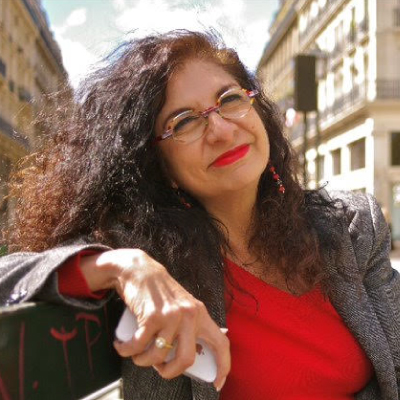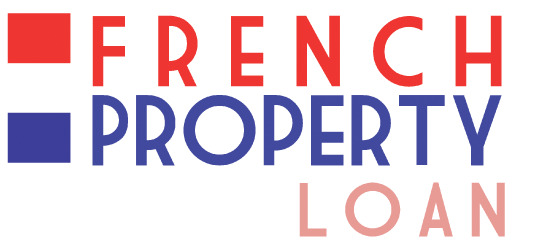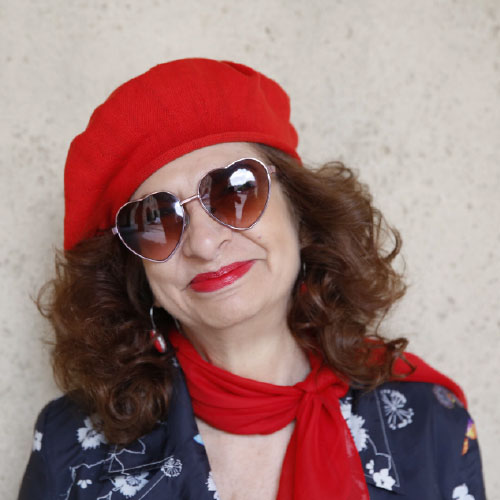Reducing The Property Taxes
Volume I, Issue 35
Last week, with power of attorney, I signed the Promesse de Vente for a client on a posh pied-à-terre in the heart of Americans’ favorite part of Paris, Saint-Germain-des-Prés. During the signing, I learned from the owner that 33 years ago when he first bought the apartment, he paid 5% of what it sold for that day! Not a bad investment in my book.
Not at all unusual for a good property, it had sold only three weeks from the first day it was put on the market…proof again that the only way to buy property here is to be on the spot to catch the best properties. We see time and time again, that the properties advertised in the agency “vitrines” or in the printed brochures distributed free all over town are the properties that DIDN’T sell so quickly and therefore are not the cream of the crop.
During the signing, I was able to negotiate a fair sum for the furnishings of the apartment — the appliances, cabinets and just about anything not a part of the walls. This amount is then deducted from the purchase price reducing the taxes paid, but not the Notaire’s fees. I make this distinction, because the fees paid (about 8%) are part tax, part legal. Reducing the offical sales price of the property will reduce the taxes, but the Notaire still earns his fair share from the total amount of the transaction.
Another way to reduce your tax is to negotiate with the rental agency to pay the agency fees in cash apart from the price of the property. Normally, the fees are paid by the seller and are included in the price of the property, but this is your opportunity to pay the fees directly, again reducing the purchase price on the Promesse de Vente and further reducing the tax. This negotiation must take place prior to the signing of the Promesse de Vente, with the agency and owner.
These are some of the legal ways to reduce the tax. Illegal ways include making a partial payment in cash to the owner and showing an even lower sales price on the sales contracts. This is tricky and risky. We are not condoning this method in any way, but we all know it does happen quite often.

Adrian Leeds
Editor, French Property Insider
Email: [email protected]
P.S. Letting a professional who is well-versed in the nuances of French property help you find your dream home or apartment and negotiate properly could save you thousands of euros. For more about Property Search Services, click here
================================
Volume I, Issue 35, October 9, 2003
In this issue:
* Starting at the Bottom of and Antique Junk Yard
* Changes in the Capital Gains Tax Laws Affect Residents and Non-Residents
* Picking Mushrooms in Saumur
* What’s the Latest Rate of Exchange, in Dollars, Euro and Pounds
* Hot Property:
* Property For Sale:
* See You on October 14th for an Afternoon Celebration
* General FPI Information…
===============================.
BOTTOM OF THE FOOD CHAIN
(Reporting on the Progress of the Rue de la Huchette Apartment)
By Adrian Leeds
Leo Ducroiset buys up ready-to-demolish buildings, takes them apart piece by piece and deposits the “bones” at his antique junk yard.
There’s no rhyme or reason to the placement of any of the remnants leftover from other people’s lives. They just sit there, placed in a somewhat disorderly fashion waiting to be discovered by someone else.
They may be wet from rain or faded and peeling from the sun and may never find a new home…but there are lots of folks out there like Porter Scott whose chain gets clinked at the sight of an ancient oak door missing half its glass panes or a corroded wrought iron bannister that once lined an elegant stairway.
Porter escorted me by regional train to a “banlieu” (suburb) of Paris where I had never been. In the rain and through the mud we trapsed in and around the doors, railings, chairs, statuary and miscellany until we found an iron railing that would work beautifully as a balustrade along the mezzanines at rue de la Huchette. Three meters long, and twice as high as we need, we determined it could be cut in half to double the length, half the height making it a perfect match.
In another corner of the yard, Porter found an iron “départ escalier” that will work perfectly well with the railing. It’s called a newel in English — a word I’ve just learned as a result of this quest for the perfect one.
Then he found solid oak corniches to contruct a “vaisselier” (to store the dishes and serving pieces in the dining room) along with a gilded oval frame that would be perfect to make a decorative mirror.
As we chose the items, Leo picked prices out of head — he knows every item like an old friend and knows its worth. Over coffee he and Porter negotiated a “global price” and they decided on a delivery date.
Porter calls this the “bottom of the food chain” — meaning that this is where it all starts for a scavenger such as himself who can bring it up through the chain of command, refurbish it and resell it to a happy buyer.
Editor’s Notes: To contact Porter Scott, you can write him here
===============================
NEW FRENCH CAPITAL GAINS RULES AFFECT REAL ESTATE SALES
by Samuel H. Okoshken
The proposed tax law for 2004 contains some important changes that affect the sales of real estate. Please keep in mind while reading this article that these are proposed changes and, while there is a high probability that they will be passed, they are not yet law.
The proposed tax law changes that will take effect January 1, 2004, liberalize the capital gain rules affecting sales of French real estate occurring on or after that date. (You may want to delay a pending sale until next year.) The changes affect TAX RATES, INFLATION ADJUSTMENT and HOLDING PERIOD. The tax rate change benefits only tax residents of France. The other two change
s benefit non-residents as well as residents.
Historical thumbnail: With one exception not discussed here, present law subjects capital gains from sales of a secondary residence to a 33.3% withholding tax for non-residents, and to tax at ordinary income rates for residents (mitigated somewhat by a 5-year averaging rule). Capital gain is computed in the traditional way: net sales price less tax basis. Tax basis, consisting of the sum of original cost plus capital improvements, is indexed for tax purposes by an official inflation factor keyed to the year of acquisition or capital expense. The capital gain is calculated using the adjusted tax basis. The portion of the capital gain subject to tax is reduced by 5% per year of the gain beginning after the second year of ownership. So, if you held your French property for at least 22 years, there would be no French capital gains tax regardless of the actual economic gain. N.B., These advantages are available even if you own the property through an SCI.
New Rules:
* The 33.3% withholding rate for non-residents remains.
* The capital gains realized by residents will be taxed at the same rate as used for portfolio gains, namely 26% .
* The inflation adjustment will be replaced by a flat 15% adjustment to cost.
* The holding period will work as follows: No reduction in taxable gain for the first 5 years of ownership. For each year after the 5th year, the amount of taxable gain will be reduced by 10%. Result: No capital gains tax after 15 years.
* Payment of tax: Non-resident rule will remain the same, namely, the Notaire handling the sale withholds the tax from the sales proceeds transmitted to the seller. The mechanics applicable to residents will drastically change: Heretofore, residents calculated the tax due when submitting their annual French tax return in the year following the sale. Hereafter, the tax will be calculated by the Notaire and withheld from the sales proceeds.
* The new rules will apply to sales occurring on or after 1 January 2004.
As I said, the new rules are part of the “proposed” 2004 tax law, and, while more-or-less certain to pass, are not yet set in stone. Moreover, the proposal contains only the bare bones of the changes, and we await more detail to see exactly how the changes will be implemented.
EXAMPLE adapted from a quasi-official publication (Francis Lefebvre, FR 41/03):
You inherit a French apartment in 1994, then valued at 70,000 Euro. You paid 8,000 Euro inheritance tax. You sell the apartment in 2004 for 120,000 Euro. Capital gain tax is calculated (for non-residents and residents) as follows:
Sales price 120,000 Euro
Less (adjusted basis):
Value for inheritance tax purposes 70,000
Inheritance taxes paid 8,000
15% adjustment to cost 10,500
Subtotal 88,500
Capital gain before holding period adjustment 31,500
Reduction in gain based on holding period of 10 years
(5 years at no reduction; 5 years at 10% per year) 15,750
Net gain 15,750
Less: Special reduction applied to all sales 1,000
Taxable gain 14,750

14,750 x 33.3% for non-residents = 4,583
14,750 x 26% for residents = 3,835
EDITOR’S NOTE: Samuel H. Okoshken, an American, is a U.S.-educated tax lawyer, and has been practicing law in Paris since 1974. His practice is devoted to the various legal and tax problems of Americans and other foreign “expats,” and to the issues that non-residents of France encounter when contemplating buying property or setting up business in France. He will be speaking at the upcoming Working and Living in France Conference here in Paris this October. His website is: http://www.okoshken.com
===============================
 “DR. DEREK’S” ARCHITECT’S ADVICE AND SERVICES
“DR. DEREK’S” ARCHITECT’S ADVICE AND SERVICES
If you have basic questions concerning apartment and home renovation, contact our resident expert Derek Bush by visiting https://adrianleeds.com/wp-content/uploads/newsletters/frenchproperty/insider/services.html
===============================
ON THE MUSHROOM TRAIL
By Vivienne Mackie
Most people , including me, who love to eat mushrooms probably don t think much about their cultivation They probably don’t realize that millions of mushrooms are cultivated in caves. Yes, caves. In Saumur, in the hillsides along the southern banks of the Loire River, are an estimated 2000 kilometers of caves and tunnels, dug into the tufa (limestone from ancient marine sediment). In the Middle Ages, the local people quarried the tufa, to make underground caverns, shelters, or houses, or used the blocks to build wonderful churches and castles above ground.
Today, the caves, known as troglodytes, are used in many ways – for wine caves, to cultivate mushrooms and snails, as museums and shops, and still as living areas. The area even boasts a zoo underground! The Saumur region is mushroom capital. For over a century it has cultivated mushrooms, known as the Champignon de Paris (button mushroom) as the Paris area first grew this variety in large quantities. The Champignon Museum, just beyond St Hilaire-St Florent, a few kilometers out of Saumur, is a great place to learn about mushrooms and as an introduction to these cool (15 C) caves burrowed into the limestone hills.
The Museum has four parts, all right in the cliffs. First is an amazing display of many types of mushrooms – more than we’d ever imagined – in the Wild Mushroom Museum. It s a unique collection of real mushrooms mounted in resin blocks. The names, shapes and colors are incredible, some reminding of childhood fairy story books. Of the 4000 or so different species in France, only 50 are edible, and many are deadly poisonous.
Next, a small cave highlights the old tools used for working the tufa, and some of the ancient ammonite fossils found in the stone. This leads to the active mushroom bed where they actually cultivate mushrooms. You can wander freely through these rooms. Champignon de Paris, pied-bleu, shiitake, and pleurottes are the main ones. Some are in large wooden boxes, many are in plastic bags, and the shiitakes on hanging containers. Last, there s a display of ornaments with a mushroom theme in a small troglodyte house, chiselled in the Middle-Ages and occupied by a family of six until 1952.
After visiting the underground museum, sit on the terrace in the sun and enjoy something from the small cafe, the Terrasse du Musee. I recommend the galipettes – grilled, stuffed mushroom caps – with a glass of Saumur wine.
Le Musee du Champignon, St Hilaire-St Florent, Saumur 49400, tel: 02-41-50-31-55, Fax: 02-41-50-61-94 Open from February 9 to November 11, 10am-7pm Entrance:
Euros 6.50
===============================
![]()
![]()
![]()
![]()
TODAY’S CURRENCY UPDATE
A service of http://www.xe.com
Subscribe for free at: http://www.xe.com/cus/
Rates as of 2003.10.09 15:05:31 GMT.
1 U.S. Dollar equals Euro 0.852664 (0.855461 Euro last week)
1 Euro equals U.S. Dollar 1.17280 (1.16896 last week)
1 U.K. Pound equals Euro 1.41828 (1.66978 Euro last week)
1 Euro equals U.K. Pound 0.705078(0.598881 last week)
================================
SEEKING A MORTGAGE IN FRANCE?
The International Living Paris Office can help you secure a mortgage in France with interest rates as low as 3.35%.
Visit https://adrianleeds.com/wp-content/uploads/newsletters/frenchproperty/loan for more information or contact us
================================
 * FOR SALE: FPI HOT PROPERTY OF THE WEEK
* FOR SALE: FPI HOT PROPERTY OF THE WEEK
We are constantly looking at properties for sale to offer to our subscribers only. Each week we will be bringing you one or two properties we believe are especially worth your consideration. As a subscriber, you will have an exclusive first look at these before they are added to the listings on our website.
Beaulieu, a luxurious restored farmhouse in the Loire Valley — live in comfort and privacy, and earn income from the two guest quarters designed for one to four couples. There is something restful and magic about Beaulieu — on six acres, nestled in the rich farmland of the Loire Valley. The historic flavor of the buildings and grounds, combined with tasteful restoration plus many modern conveniences and amenities, make Beaulieu an incredible investment.
Asking Price: 700,000 euro
Full details and photos at Beaulieu
* FPI PROPERTY LISTINGS – SALE
All of the following apartments are for sale by owner. There are no agency fees incurred with the exception of a finders fee we place to connect you with the owner and assist you in the purchase. We have chosen two very high level properties and two very low level properties, but both in very rentable areas of the city, should you wish to make your investment profitable.
The prime rental neighborhoods are the 1st – 8th arrondissements, but each depending on location within each arrondissement. The most requested is the Ile Saint-Louis, second the 6th, third the 4th. The most expensive property in the city is the Place des Vosges in the 4th, Ile Saint-Louis (also 4th) and the 6th arrondissement.
— BETWEEN PLACE DE LA BASTILLE AND PLACE DES VOSGES
Paris 4th, 48 square meter, one-to-two-bedroom apartment in a 1900 building on the 4th floor (with the possibility of an elevator), calm, quiet, bright. Independent kitchen, bath, parquet floors, moulding, fireplace.
Asking Price 285,000 Euros + 2% Finders Fee
Serious Inquiries email: Bastille_Vosges
— SQUARE DU TEMPLE
Paris 3rd, 41 square meter one-bedroom apartment in an old Marais building under renovation. Charming and in perfect condition, open wood beams, parquet, American kitchen, beautifully decorated.
Asking Price 234,000 Euros + 2% Finders Fee
Serious Inquiries email: Square_du_Temple
To read more, click the links below.






